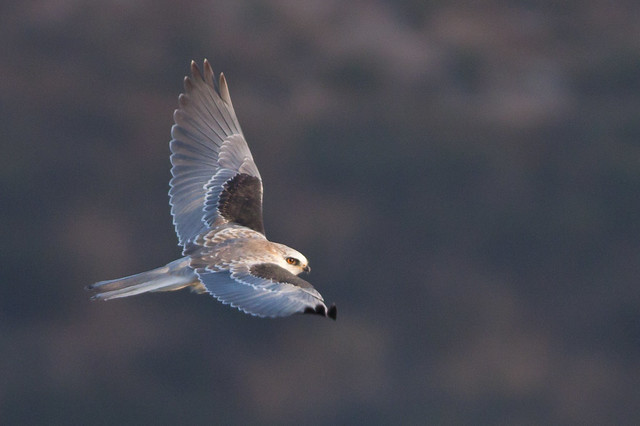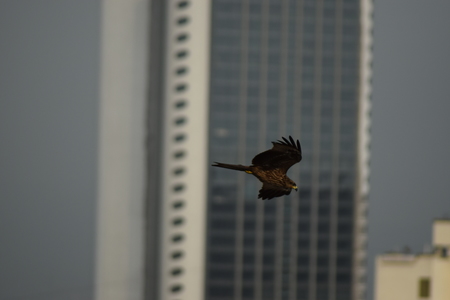Easiest fix
Only shoot the bird when the sun is at your back, not behind the bird. Given how redtails circle where I am, I sometimes just wait as I draw a bead and follow them around the circle, to where the light is falling on them nicely.
However. This will be rarer than backlit opportunities, because a hunting hawk doesn't like to fly into the light and be blinded. The bird, too, wants to have the sun at his/her back, to be able to better see its prey. Like bird-butt shots of them flying away, we all get tons of backlit shots, too. But after deleting a few thousand of them, you simply learn not to click in those situations, but to simply enjoy having seen your feathered friend.
Spot Metering
If you're a good shot, and can aim your metering exactly where you want, this is a great case for using spot metering mode. Spot metering basically tells the camera only to meter at the designated spot. If you can get that spot onto the bird with accuracy, then the surrounding scene is mostly ignored by the metering, and your exposure settings will be good for the bird. However, you will overexpose the background, if you're shooting a backlit bird, it can be hard to hit the target every time (I'm lousy at it, so I go with center-weighted most of the time), and you might overexpose even more if the bird is very dark (e.g., ravens--I run into this all the time and have to compensate) or underexpose if they're very light (e.g., great egrets).
Use a higher ISO setting
Bird photography almost inevitably requires a fast shutter speed—either from the speed the bird is zipping past, or to mitigate for camera shake blur in combination with very long, slow lenses. So your ISO is the only factor left to avoid underexposure. I shoot with Canon's EF 400mm f/5.6L USM on a 50D. Being unstabilized and on crop, by the 1/focal_length rule, that means I need shutter speeds or 1/640s or higher (I most typically aim for 1/1000s or faster). But it's also an f/5.6 lens, and I'll stop to f/8 for a little extra performance. At 1/1000s and f/8, on a bright sunny day, requires an iso setting of at least ISO 250 (think: Sunny 16 rule). On a less than bright sunny day, or in the morning/evening hours when birds are most active, that can easily require ISO 400 to 1600. I generally start out at iso 800, even on sunny days. Fear not the higher ISO settings, it's why you got the big camera with the big sensor.
You can use M mode if you know exactly what settings will work, but I tend to use aperture priority to get the fastest possible shutter speed every time, and then adjust with exposure compensation as best I can. Because a circling hawk going in and out being lit/backlit can change conditions very quickly, I find that M defeats the purpose. But I live in Southern California and have a particular spot on a canyon ridge, where young birds are unwary and curious enough to simply circle around me to try and figure out what I'm doing with that big metal pointy thing.

Juvenile White-Tailed Kite (Elanus leucurus).
Canon 50D, EF 400mm f/5.6L USM, iso 800, f/5.6, 1/640s. December, 7:20am.
Your situation may be very different.





